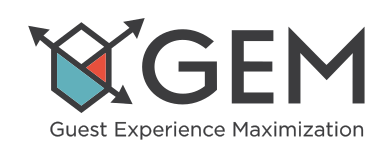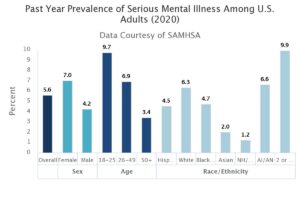Mental Health is Still an Elephant in the Room

Mental Health Awareness Month is here. Though a rising tide of advocates presses for inclusion in the health care system, mental health is still an elephant in the room.
Mental Health America (MHA) stresses the “Back to Basics” theme for Mental Health Awareness Month 2022. It offers a toolkit for the observance each year, which originated in 1949. The purpose is to educate the public about mental issues, let them know it’s okay to talk about them and direct them where help is available.
According to the National Institute of Mental Health (NIMH), nearly one in five (52.9 million in 2020) adults live with mental illnesses. NIMH broadly breaks them into Any Mental Illness (AMI) and Serious Mental Illness (SMI).

Integrating Mental and Physical Health
Mental health has long been recognized in the medical community as aligned with physical health, although a divide exists when it comes to treatment.
New Jersey-based Hackensack Meridian Health (HMH) has 17 hospitals, academic medical centers, and a $6.9 billion operating budget in 2020. It integrates physical and mental health services for adults and children. It is not a new idea, but HMH secured $5 million in state funding to develop programs with integrated behavioral health services for children last year.
HMH’s urgent care centers include behavioral health services because they believe it reduces emergency department visits by 40 to 50 percent. It integrates crisis units and licensed health professionals so doctors can focus on medical issues.
“Our goal is to provide quality, effective, and financially responsible care,” said Joseph Miller, vice president for HMH’s Behavioral Health Care Transformation Services, in a press release. “This will drive the growth and future of physical and behavioral health integration.”

Mental Health Still an Elephant in the Room
The Affordable Care Act (PPACA) of 2010 includes a goal “to promote the integration of physical and mental healthcare in community-based centers.” There is a debate from numerous sources about how the integration works and whether health care providers and insurance companies will cooperate.
An abstract from the Journal of Medicine Access from October 2021 includes the following conclusion. “Interdisciplinary conflict, power differentials, job insecurity, communication challenges, and the subsumption of mental health into the medical model pose barriers to successful integration.”
Regardless of health care organizations including behavioral health into their treatment plans, free resources are available for those who need them. They include the National Suicide Prevention Lifeline, Crisis Text Line, Veterans Crisis Line, and the Disaster Distress Helpline.

Exercise Your Mind and Body
Healthline.com includes a page of wide-ranging and simple techniques to maintain mental fitness. They remind everyone that mental wellness can lead to a sharp mind and a healthy body.
The Human Resources team here at LMS has taken an ambitious initiative this year to host “Well-being Mondays” in May for the team. It includes gratitude, yoga, brainteasers, and wellness tools to benefit mental health (internal link). Teammates are joining in, serving the double purpose of team bonding.
We wish positive thoughts and good mental fitness to all from the LMS team for Mental Health Awareness Month.







